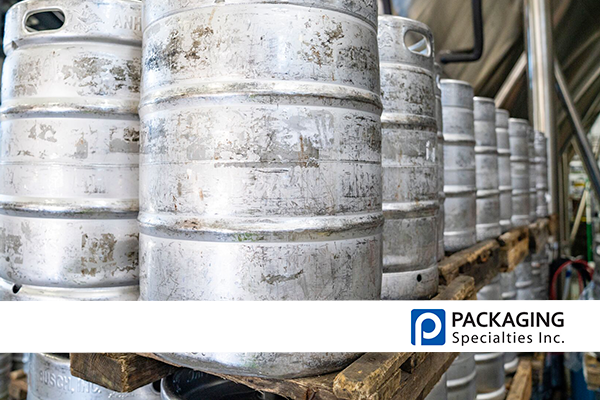Here at Packaging Specialties, we manufacture containers that are designed to accommodate the storage needs for a growing list of industries, from those producing consumables, like beer and wine, to those producing environmentally hazardous chemicals like paint and reactive catalysts. When it comes to the best chemical storage practices, any company’s first priority should be in purchasing containers designed specifically for their industry’s goods. Second to that, however, is in implementing chemical storage practices that will prevent dangerous chemical reactions in the event of a spill. Improperly storing chemicals could lead to devastating fires, explosions, or other chemical reactions that could present serious health hazards for a business, its employees, or even its customers.
Safe Chemical Storage is NOT as Easy as A to Z
Tempting though it may be to see your chemicals organized in an orderly alphabetized line, safe chemical storage practices dictate that chemicals never be stored based on name or even the size and shape of the containers that hold them. Alphabetizing chemicals could lead to potentially explosive or highly reactive chemical combinations in the event of a spill. Instead, chemicals should be stored and organized according to their chemical class, which can be found on the Material Safety Data Sheet (MSDS) provided by the chemical’s manufacturer or importer. There are many chemical classes, and each of these classes fit within safe – non-combustible or non-reactive – chemical groupings, as determined by the National Fire Protection Association (NFPA). Sorting and storing chemicals according to their chemical class and grouping is an essential chemical storage safety practice. Store like chemicals together and away from other chemicals that may cause reactions if mixed.
Chemical Storage Containment Systems
Not only is it critical that chemicals be stored in the proper containers and in the proper class groupings, but equally important is where they are stored. Chemicals should never be stored on the floor, even those contained in steel drums. Depending on the particular chemicals being stored, specialized storage cabinets that will contain fires or other chemical reactions may be required. Non-corrosive or non-combustible chemicals stored in steel drums or other large containers may need to be stored on shelves that have been anchored to prevent tipping. Corrosive or environmentally hazardous chemicals may need to be stored on a secondary containment system, which will prevent the chemical from spreading in the event of a leak or spill.
Keeping Chemical Storage Tidy
Regardless of the containment system for a company’s chemicals – whether shelves, cabinets, etc. – the storage of chemicals should always be neat, tidy, and orderly. Keep walkways free of chemical containment systems that employees or customers may kick or trip over, potentially creating a spill. Maintain a log of data sheets (MSDS) for all chemicals housed within the facility, training all employees on the safe handling for all chemicals. Maintain an inventory and record of all chemicals being stored, noting in particular the quantities and age of each. Be sure to properly dispose of chemicals according to the standards laid out on each chemical’s data sheet. Be sure to inspect chemicals in storage frequently, checking to ensure the containers or secondary containment systems have not failed (or do not show signs of failing).
Packaging Specialties will work closely with you to design containers specifically for your industry to ensure safe chemical storage. Contact us today!


Recent Comments